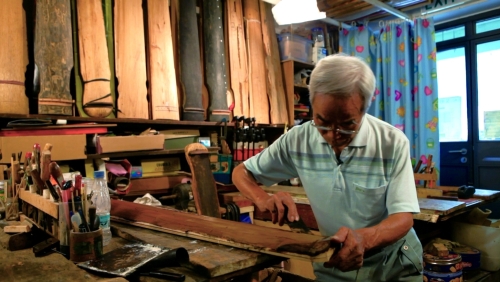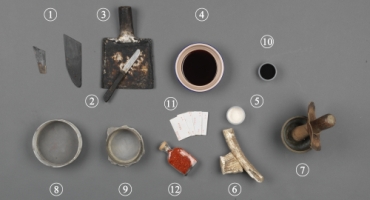-
History & Society
- Education in Pre-war Hong Kong
- History of Taikoo Sugar Refinery
- Hong Kong Products Exhibition
- Local Festivals Around the Year
- Post-war Industries
- Pre-war Industry
- The Hong Kong Jockey Club Archives
- Tin Hau Festival
- Memories We Share: Hong Kong in the 1960s and 1970s
- History in Miniature: The 150th Anniversary of Stamp Issuance in Hong Kong
- A Partnership with the People: KAAA and Post-war Agricultural Hong Kong
- The Oral Legacies (I) - Intangible Cultural Heritage of Hong Kong
- Hong Kong Currency
- Hong Kong, Benevolent City: Tung Wah and the Growth of Chinese Communities
- The Oral Legacies Series II: the Representative List of the Intangible Cultural Heritage of Hong Kong
- Braving the Storm: Hong Kong under Japanese Occupation
- A Century of Fashion: Hong Kong Cheongsam Story
Geography & EnvironmentArt & Culture- Calendar Posters of Kwan Wai-nung
- Festival of Hong Kong
- Ho Sau: Poetic Photography of Daily Life
- Hong Kong Cemetery
- Sketches by Kong Kai-ming
- The Culture of Bamboo Scaffolding
- The Legend of Silk and Wood: A Hong Kong Qin Story
- Journeys of Leung Ping Kwan
- From Soya Bean Milk To Pu'er Tea
- Applauding Hong Kong Pop Legend: Roman Tam
- 他 FASHION 傳奇 EDDIE LAU 她 IMAGE 百變 劉培基
- A Eulogy of Hong Kong Landscape in Painting: The Art of Huang Bore
- Imprint of the Heart: Artistic Journey of Huang Xinbo
- Porcelain and Painting
- A Voice for the Ages, a Master of his Art – A Tribute to Lam Kar Sing
- Memories of Renowned Lyricist: Richard Lam Chun Keung's Manuscripts
- Seal Carving in Lingnan
- Literary Giant - Jin Yong and Louis Cha
-
History & SocietyGeography & EnvironmentArt & Culture
-
View Oral History RecordsFeatured StoriesAbout Hong Kong Voices
-
Hong Kong MemoryThe Legend of Silk and Wood: A Hong Kong Qin StoryRecently Visited
Cement Priming
-
Step 6: Cement Priming
After completing the wood base, a horn spatula is used for priming the lacquer cement, which is made by mixing raw lacquer and antler powder. Antler powder is ground from broiled antler and categorised into the following grade classes: 800, 1200, 2000, etc. The greater the number is, the finer the powder. Multiple layers of lacquer cement have to be applied onto the qin base, beginning with the coarsest one. After the base cement has dried, it can be sanded smooth. The process is repeated a few times, using finer cement on each successive layer of application. After the lacquer cement has completely dried, it forms the base cement, which has a hard texture designed to protect the wood. An appropriate thickness of base cement can also improve the instrument’s timbre. The dried base cement has a natural chestnut brown hue which becomes black when mixed with carbon black, or sharp red or brownish red when mixed with cinnabar. Scraps of gemstones and coral, called the babaohui (eight-jewel powder), can also be added to create special visual effects.
-
Step 6: Cement Priming
Tools and materials
- Horn spatulas – made of buffalo horn, have a hardness and flexibility that allows even spreading of a thin layer of lacquer on the qin body
- Lacquer knife – made of steel, used for mixing antler powder with lacquer. The lacquer knife must be clean to prevent inclusion of pollutants into the raw lacquer.
- Lacquer dish – made of steel, used for holding and mixing lacquer cement
- Raw lacquer – used for mixing with antler powder to create the base cement
- Antler powder – used for mixing with raw lacquer to create the base cement
- Antler – the raw material for making antler powder
- Pestle and mortar – for grinding the antler into powder
- Coarse strainer – to filter out rougher particles of antler powder to create the base cement
- Fine strainer – to strain fine antler powder to create the base cement
- Carbon black – charcoal particles obtained after burning wood, for creating a black pigment
- Cinnabar – mineral, for creating a reddish pigment
- Coral scraps – an ingredient of the babaohui (eight-jewel powder)
Copyright © 2012 Hong Kong Memory. All rights reserved. -







